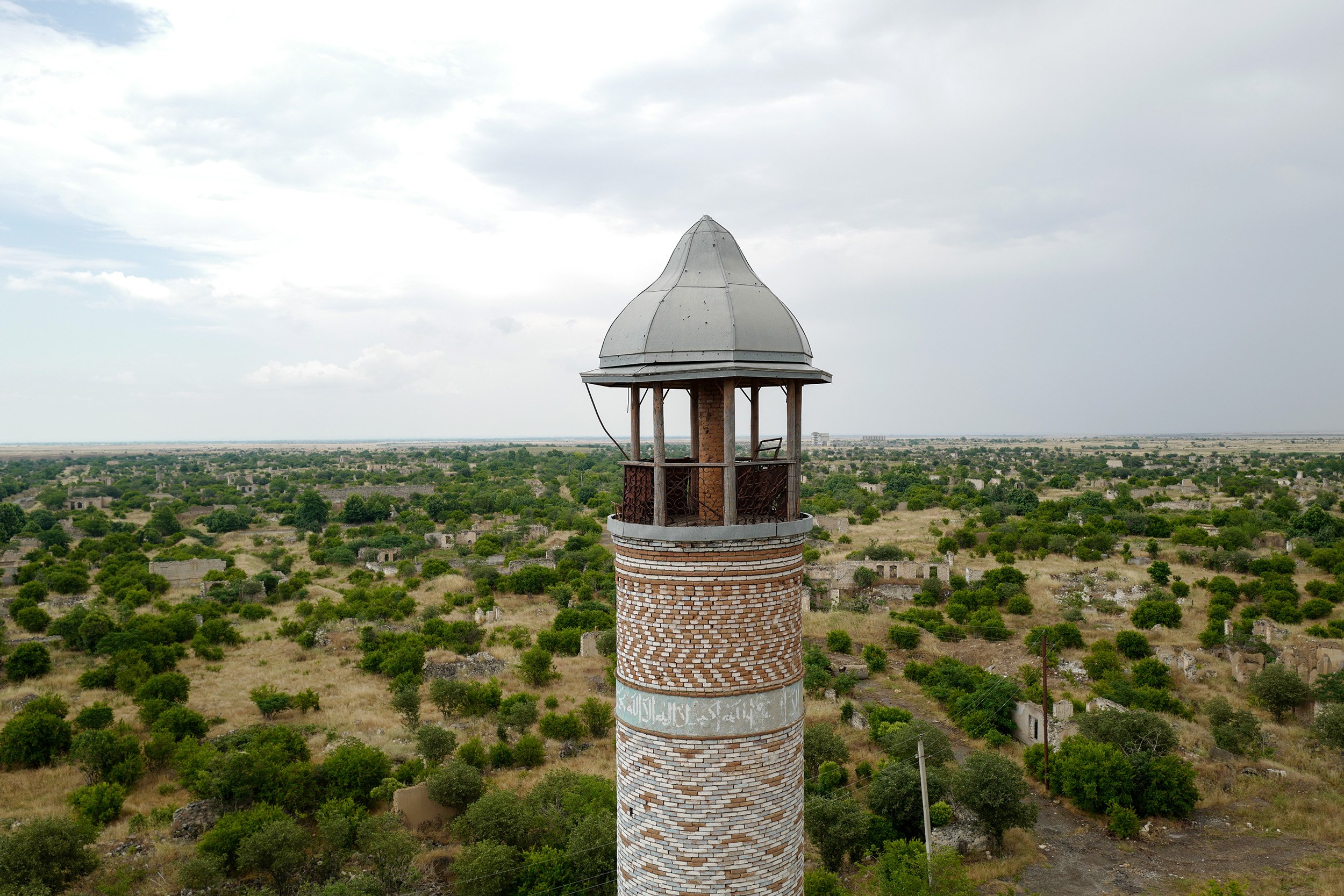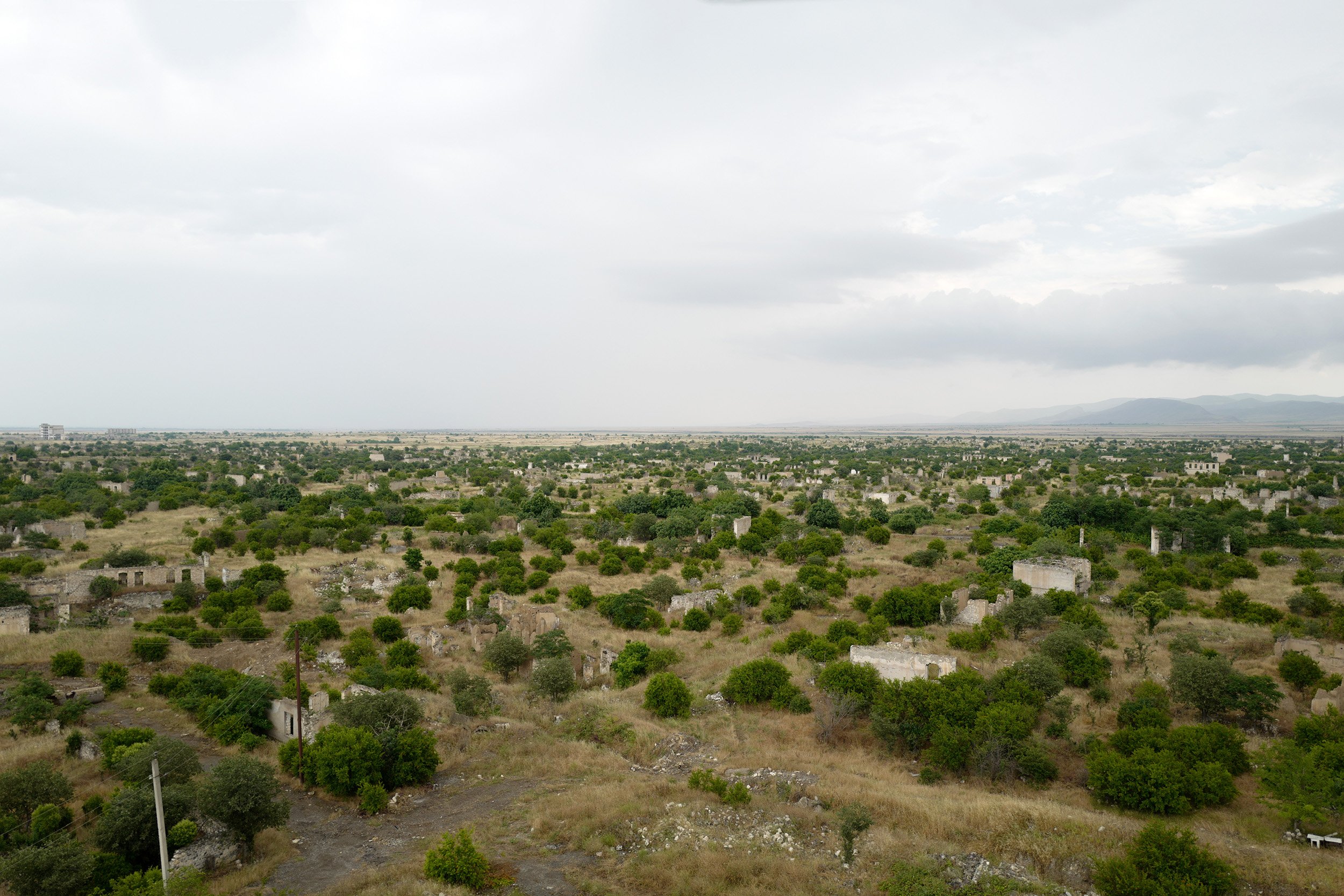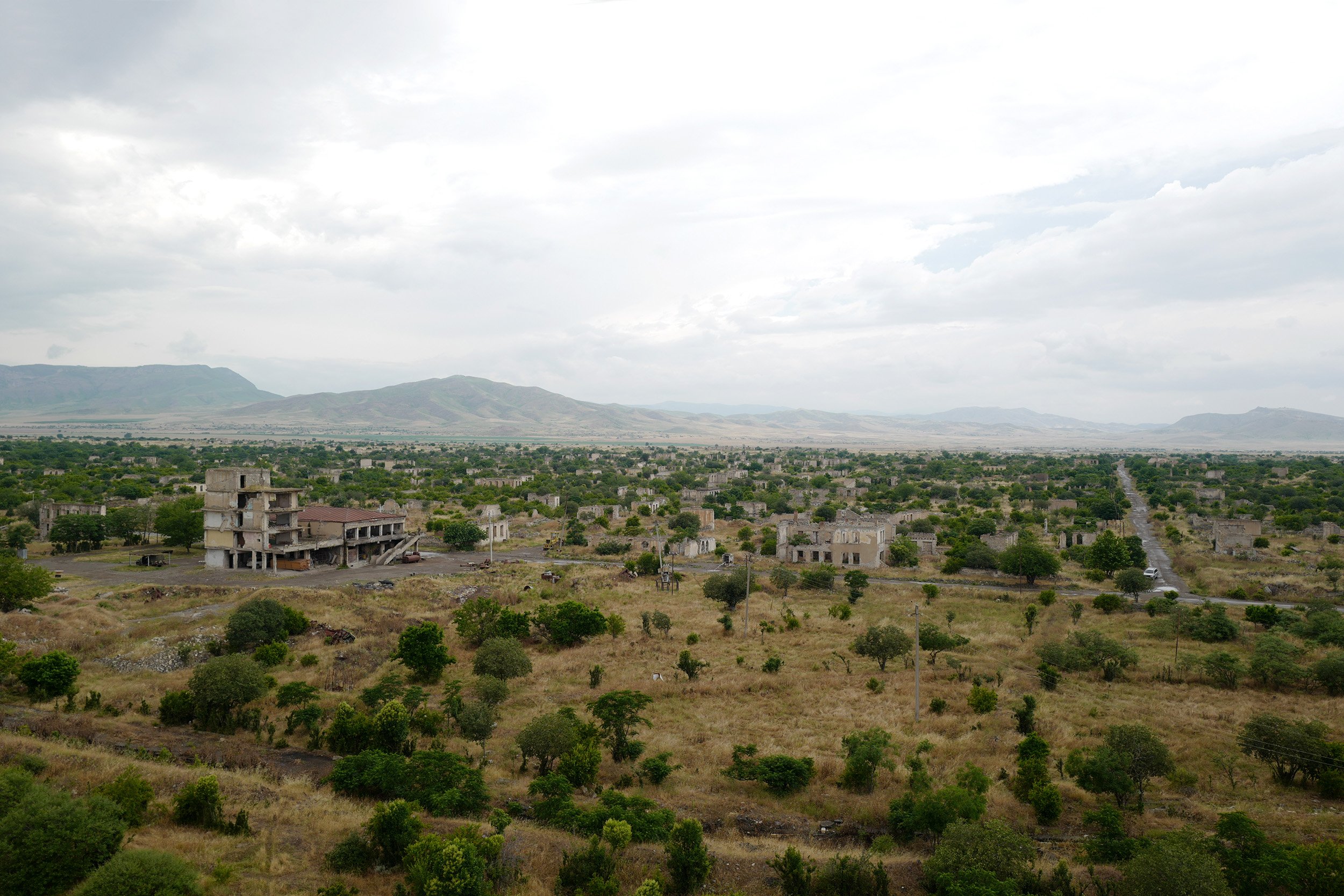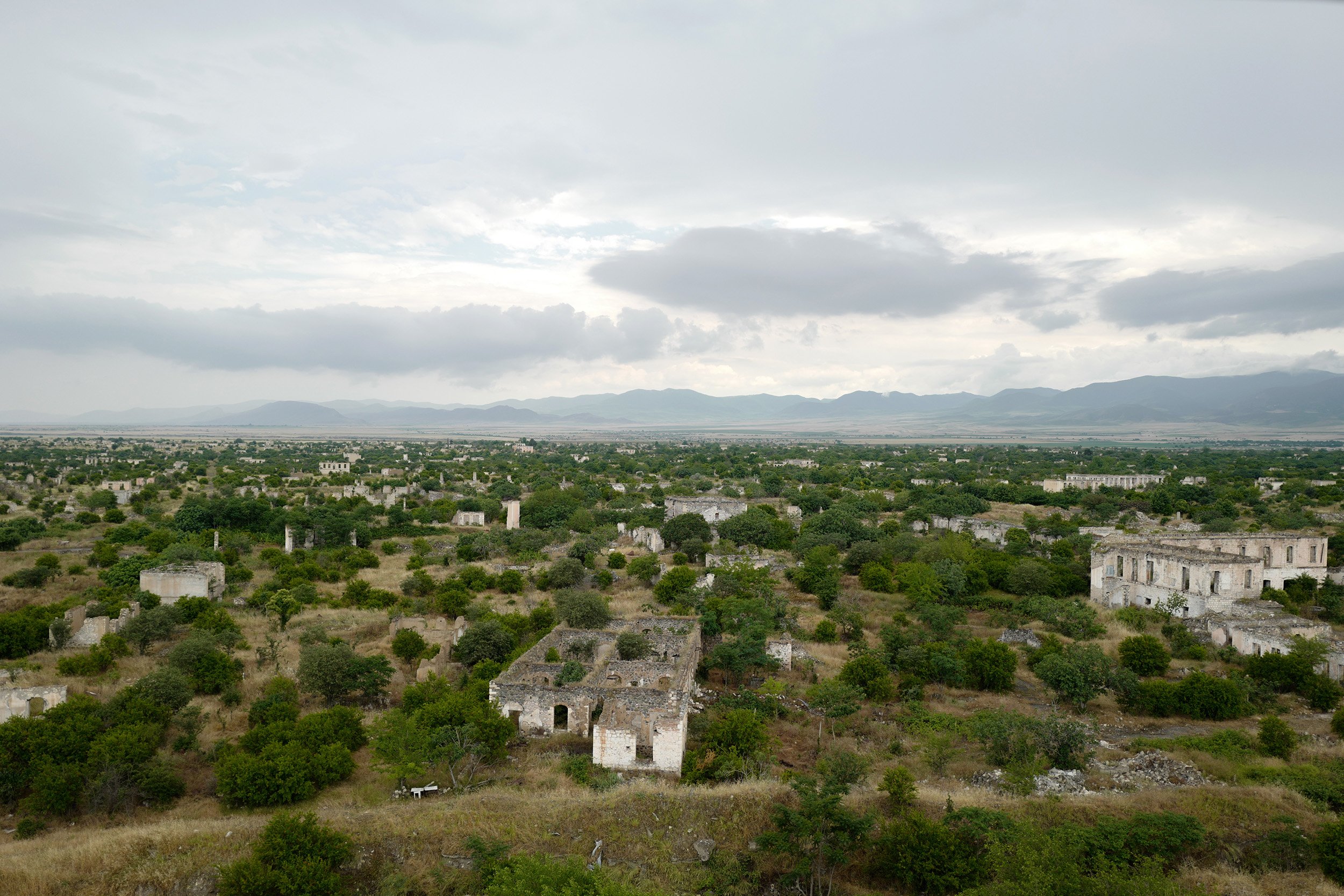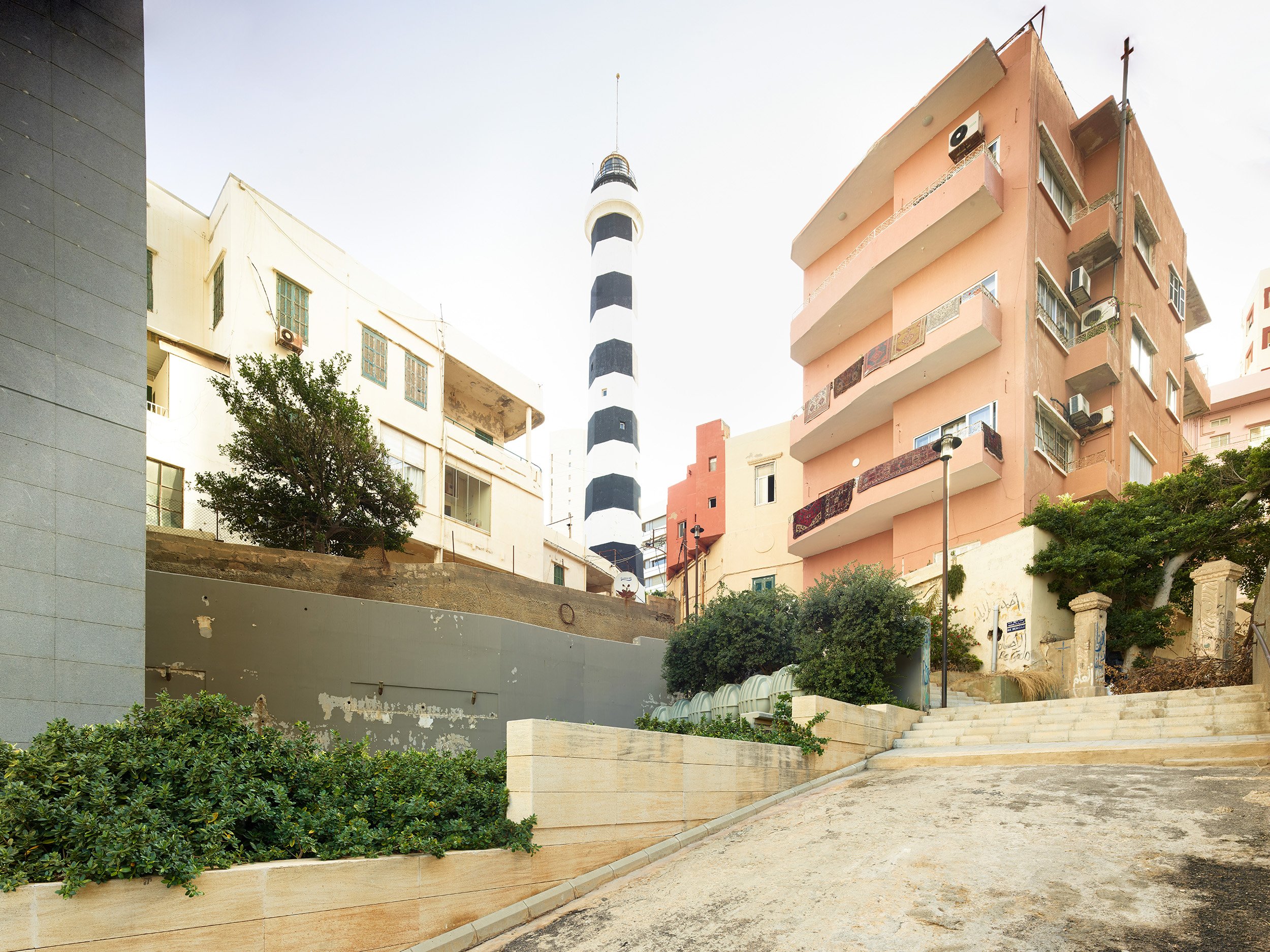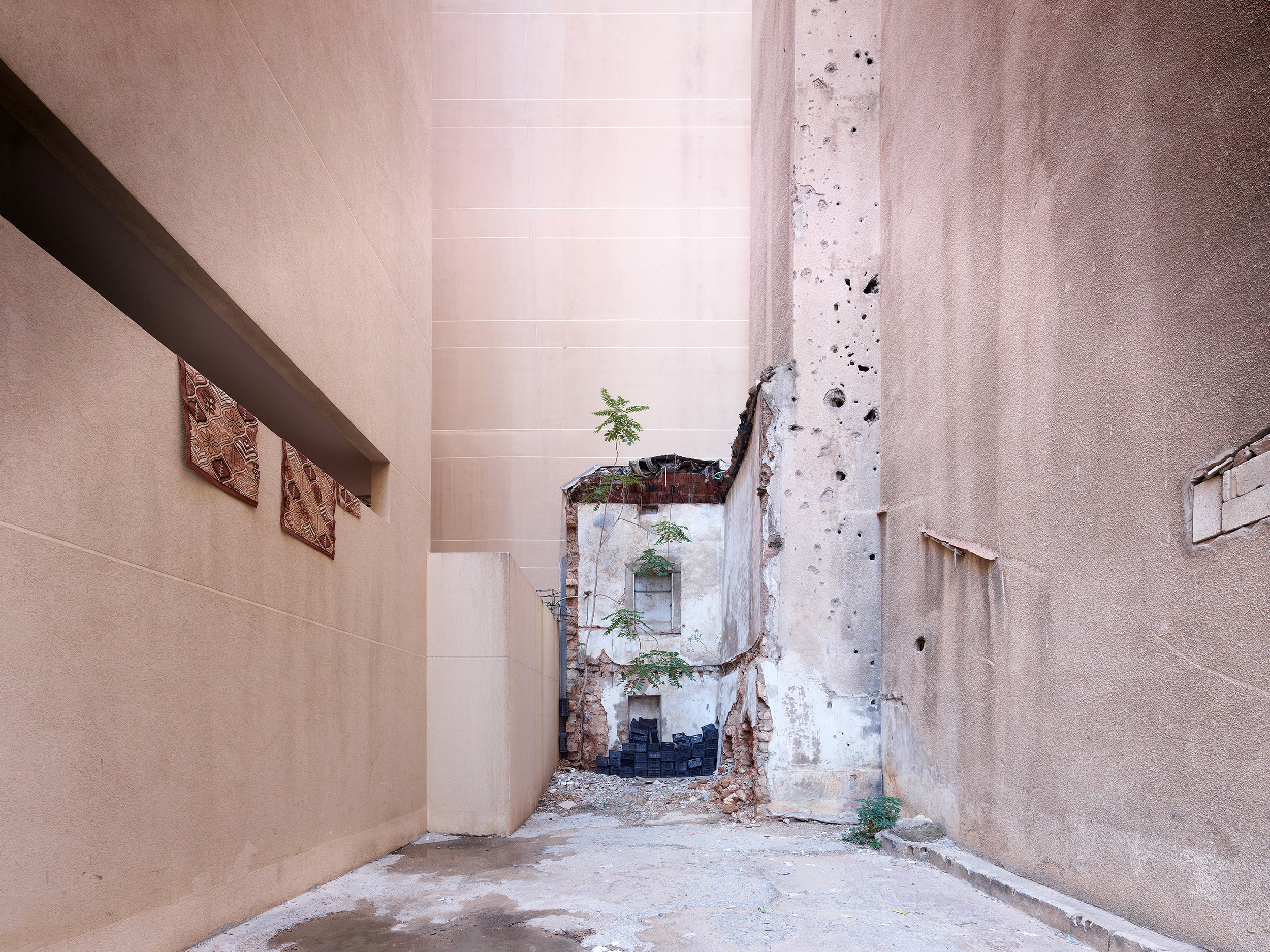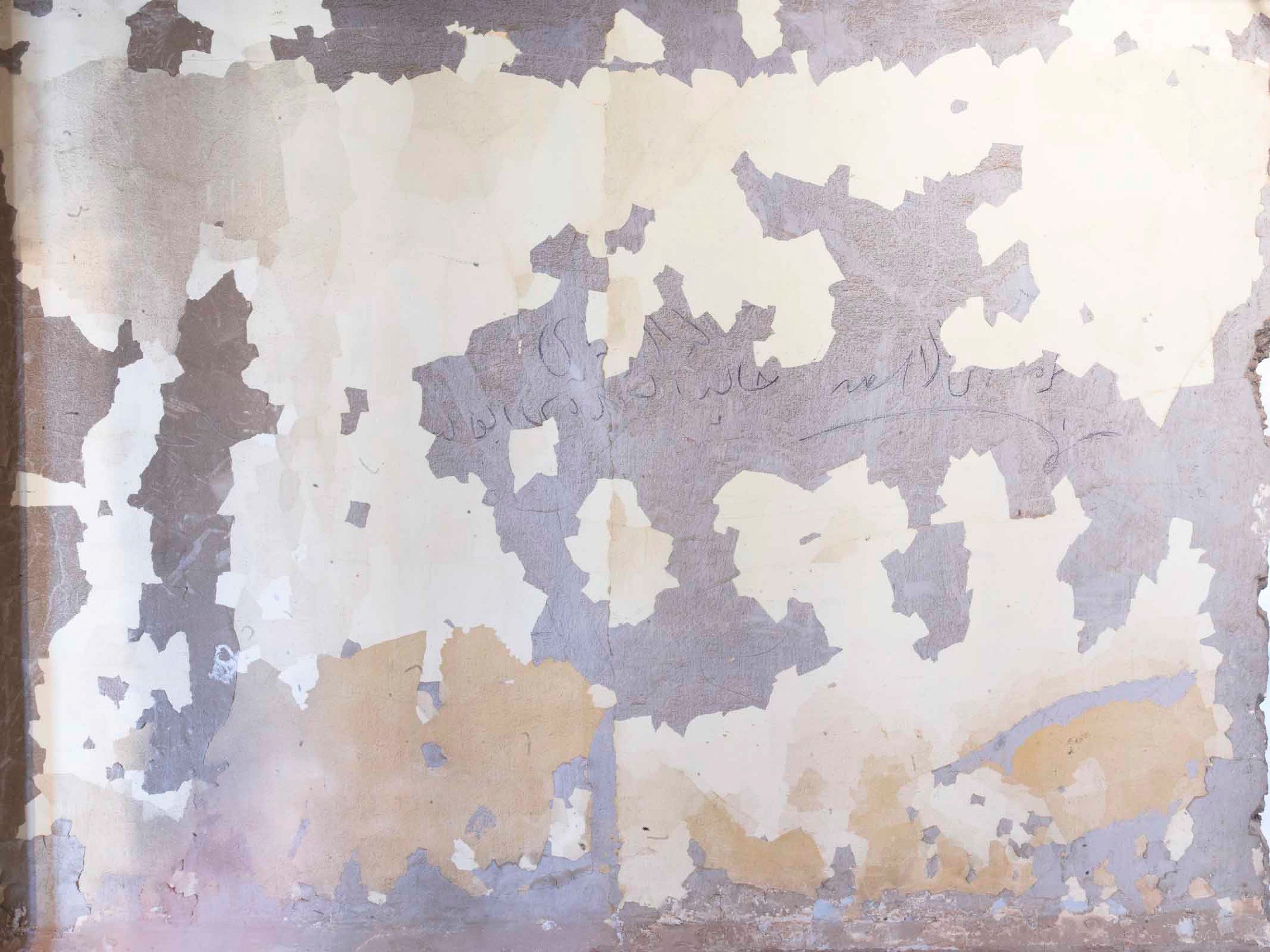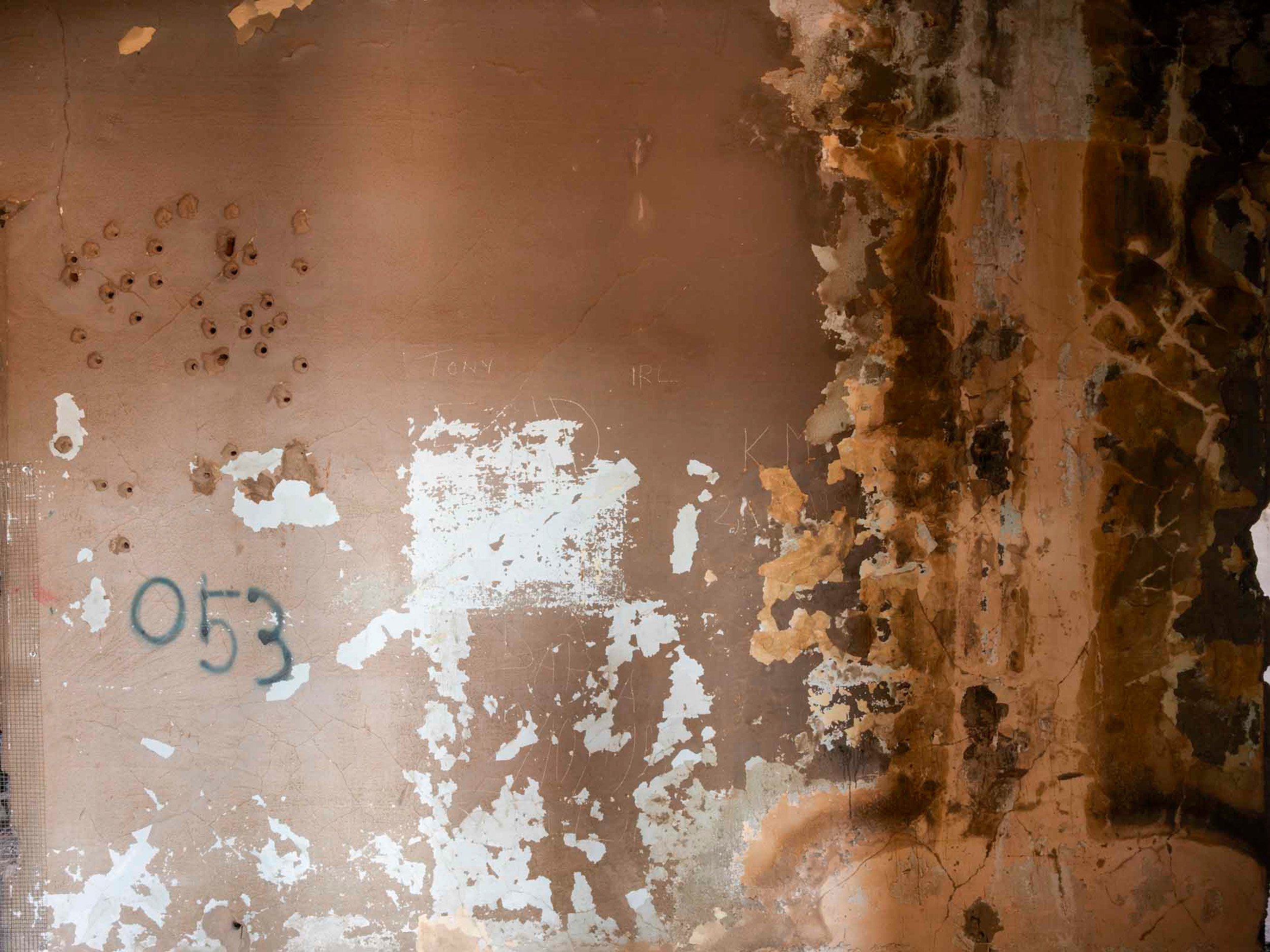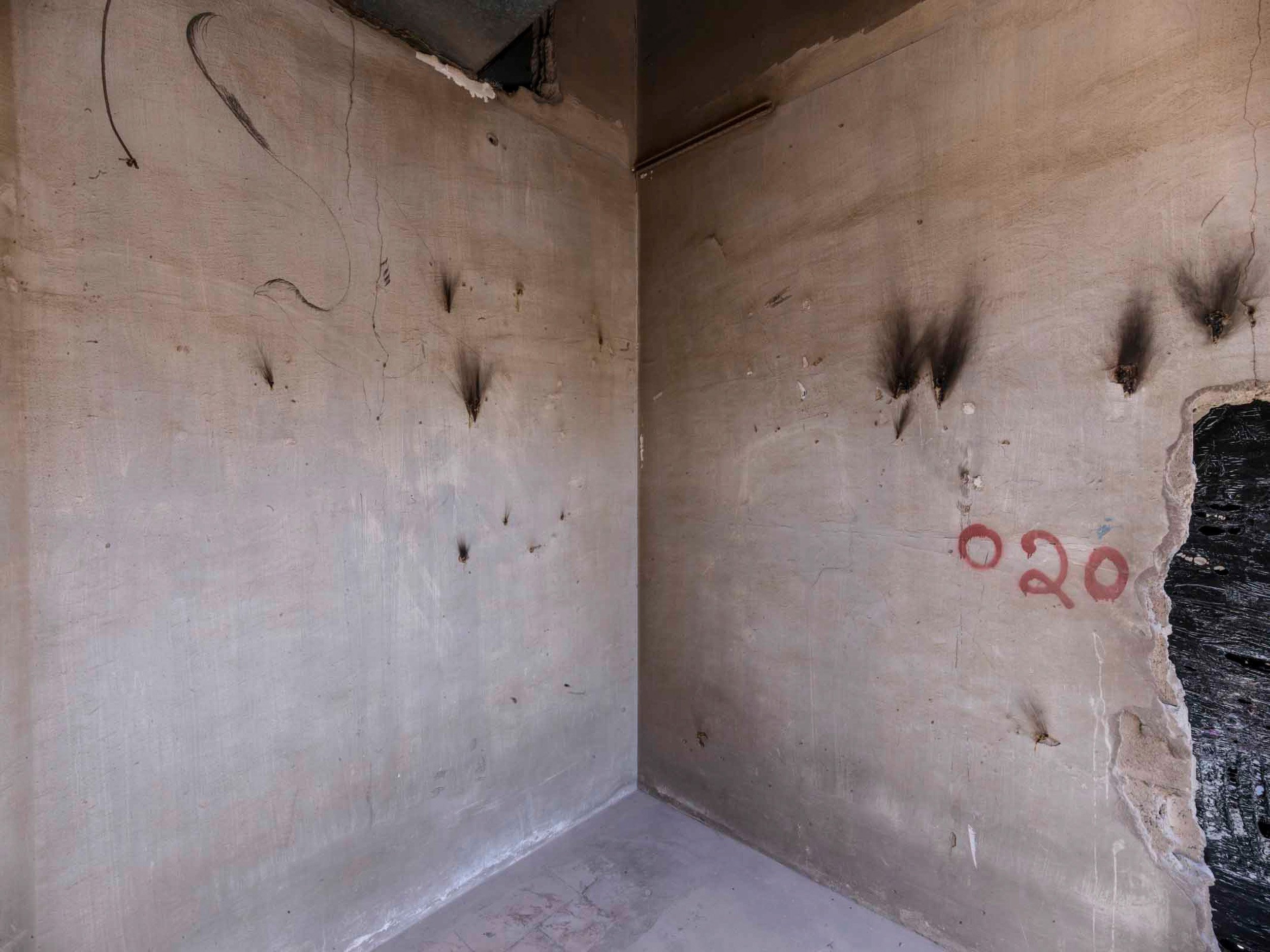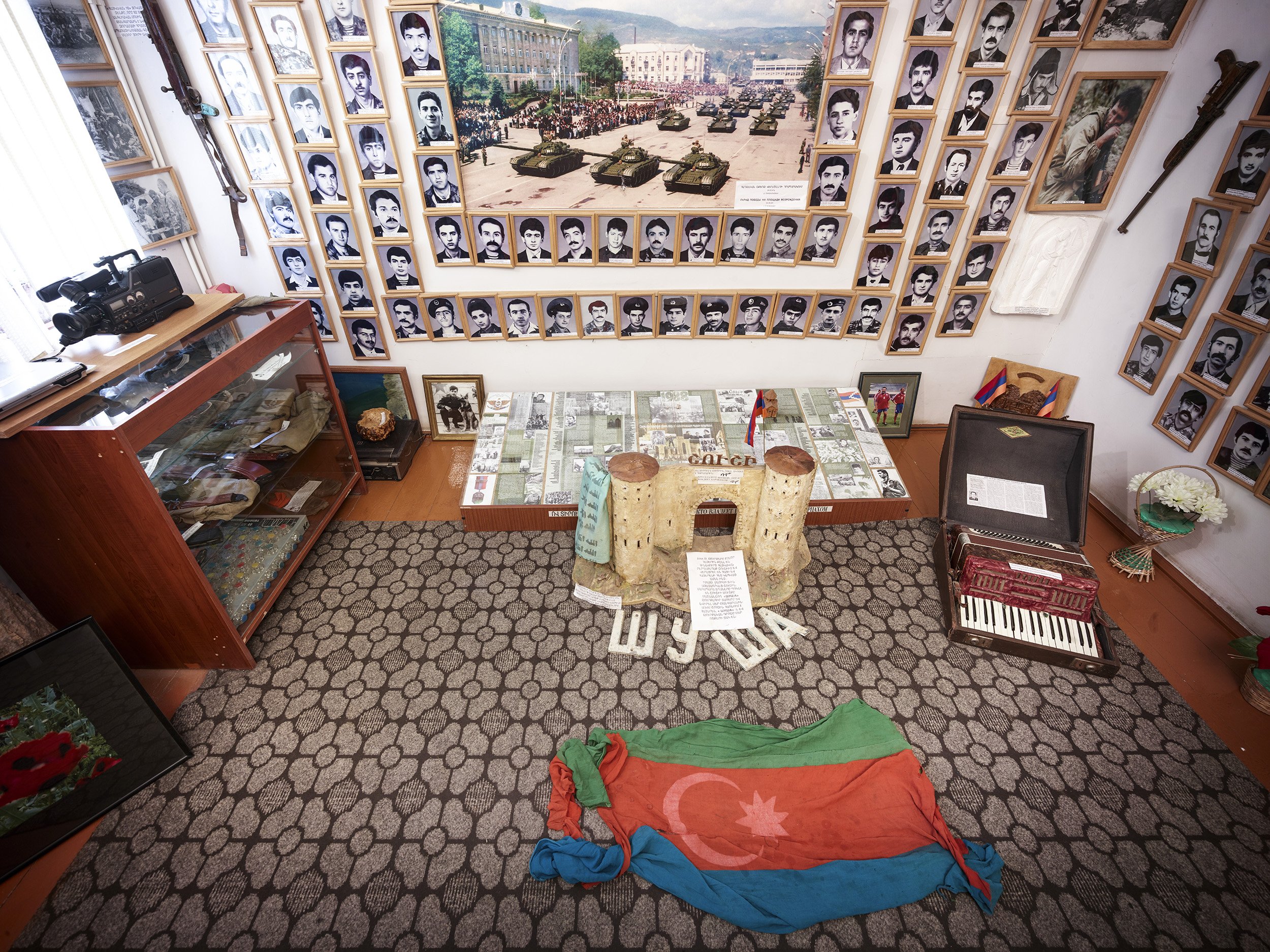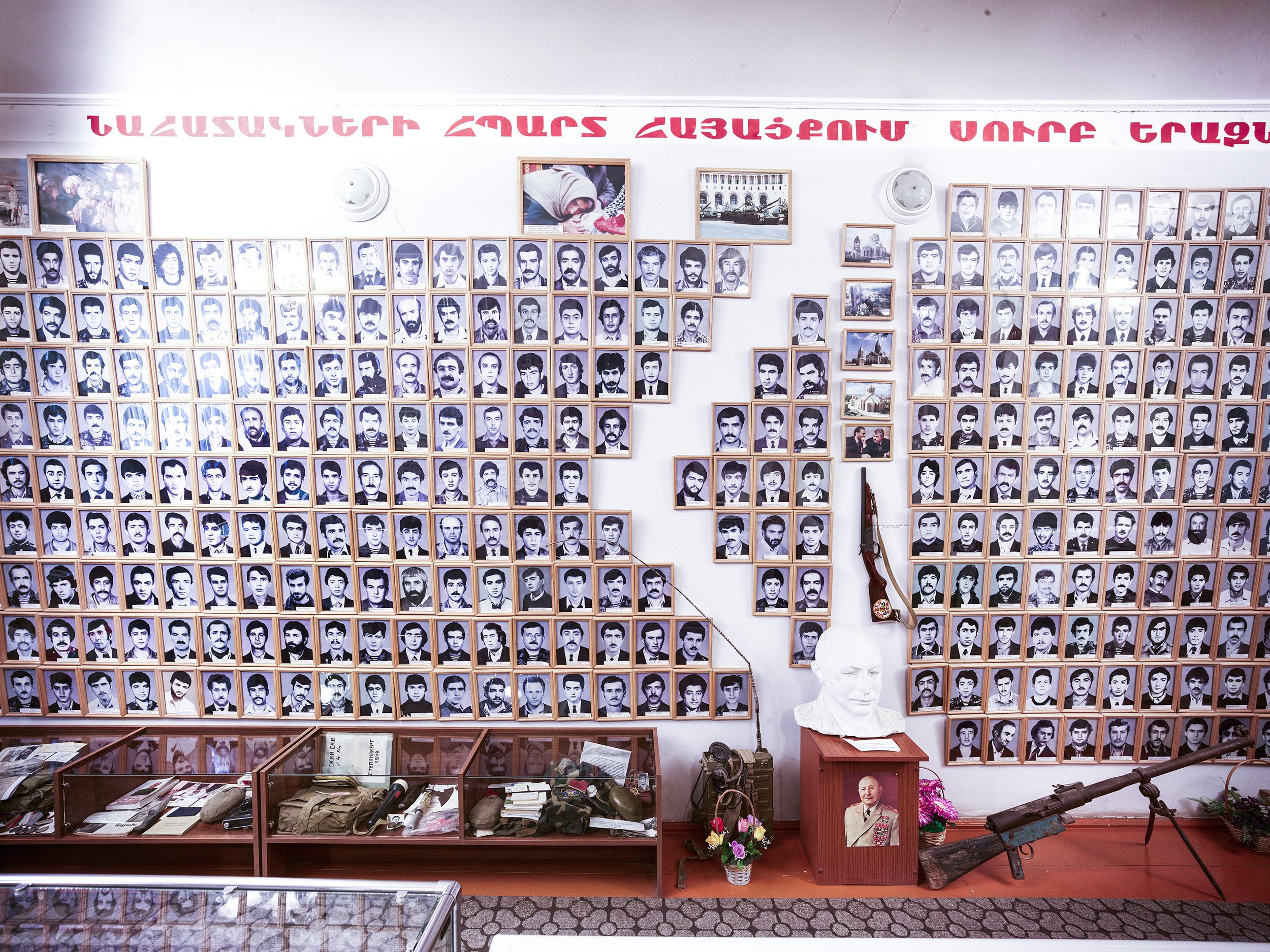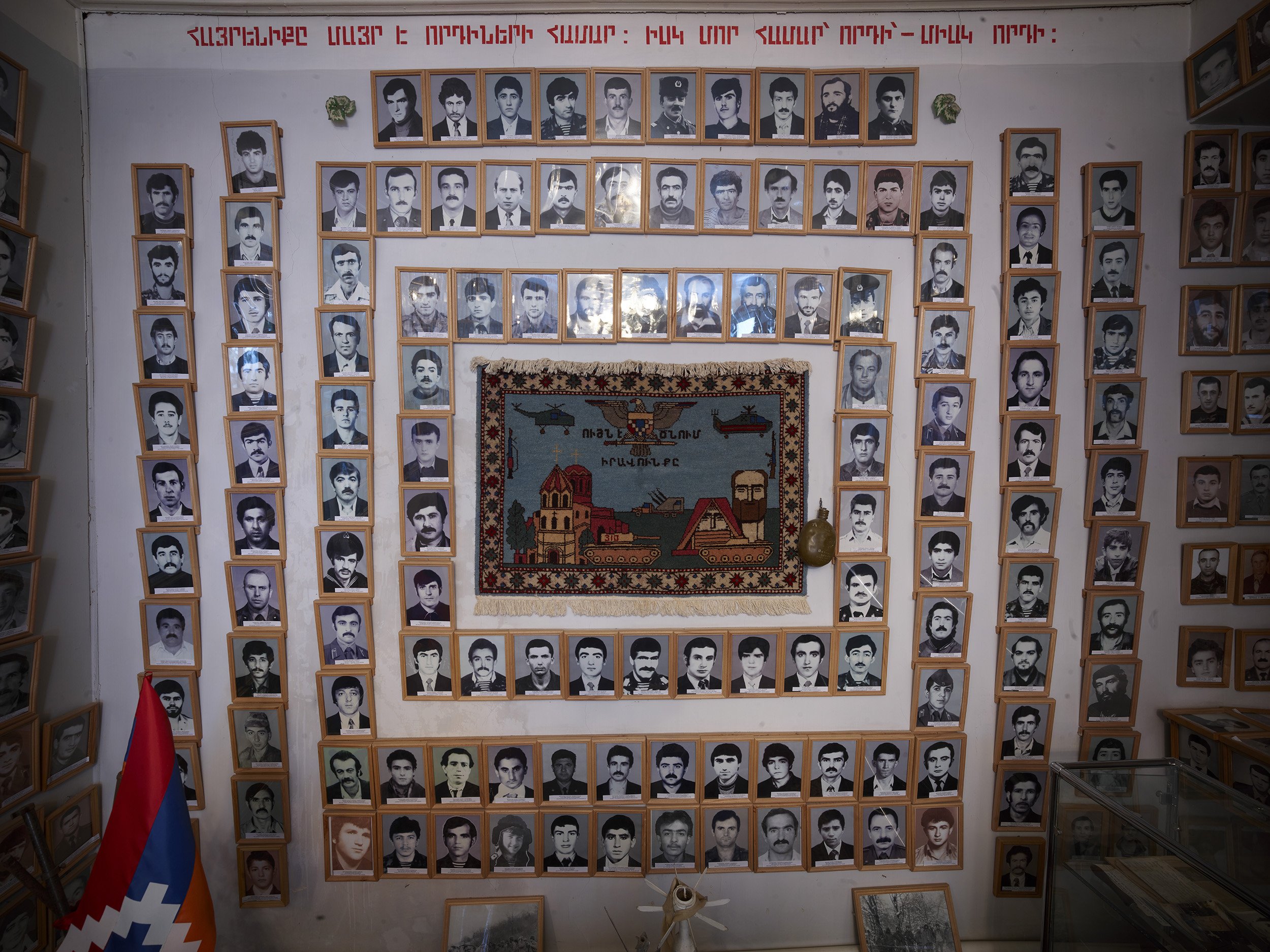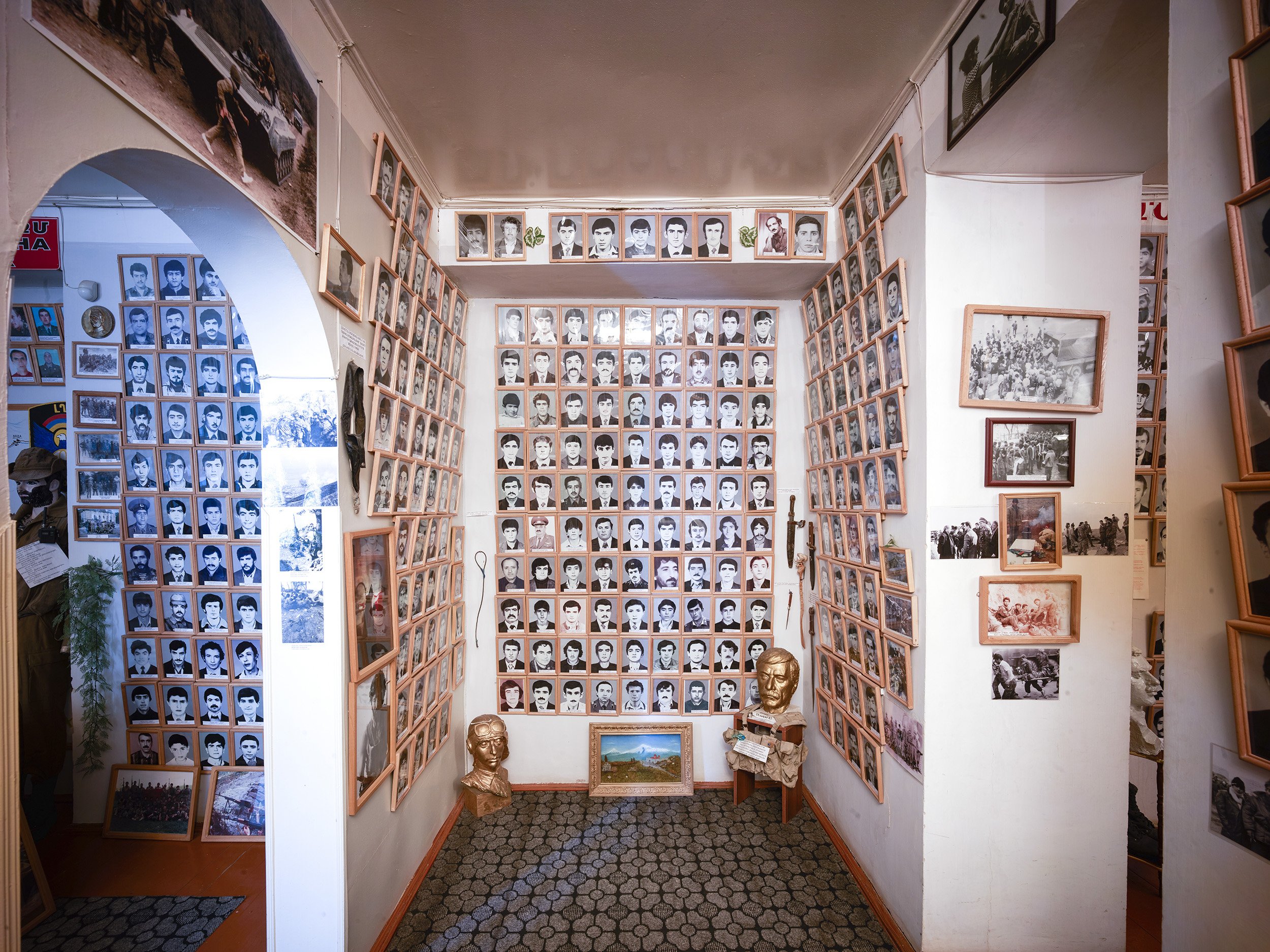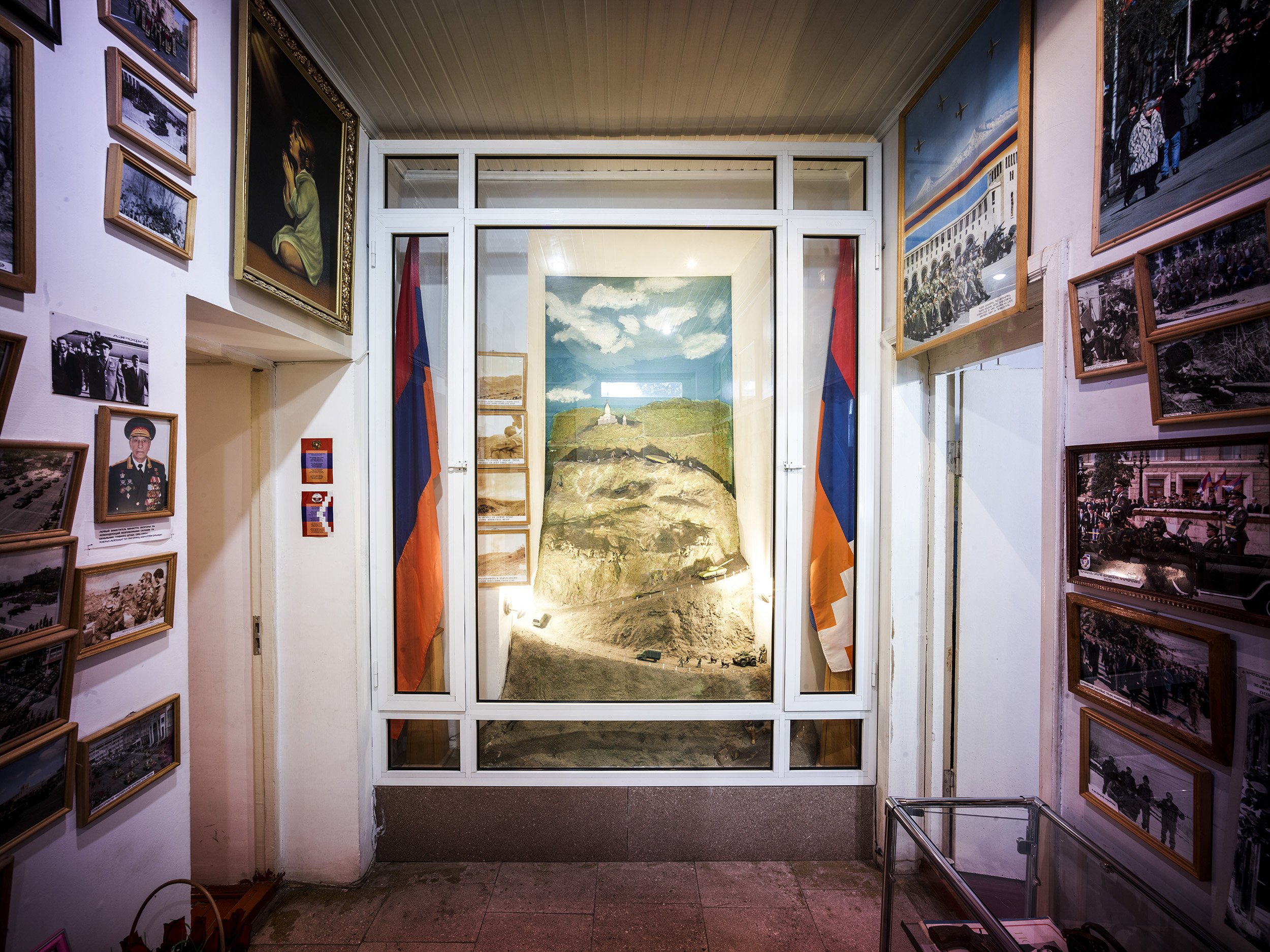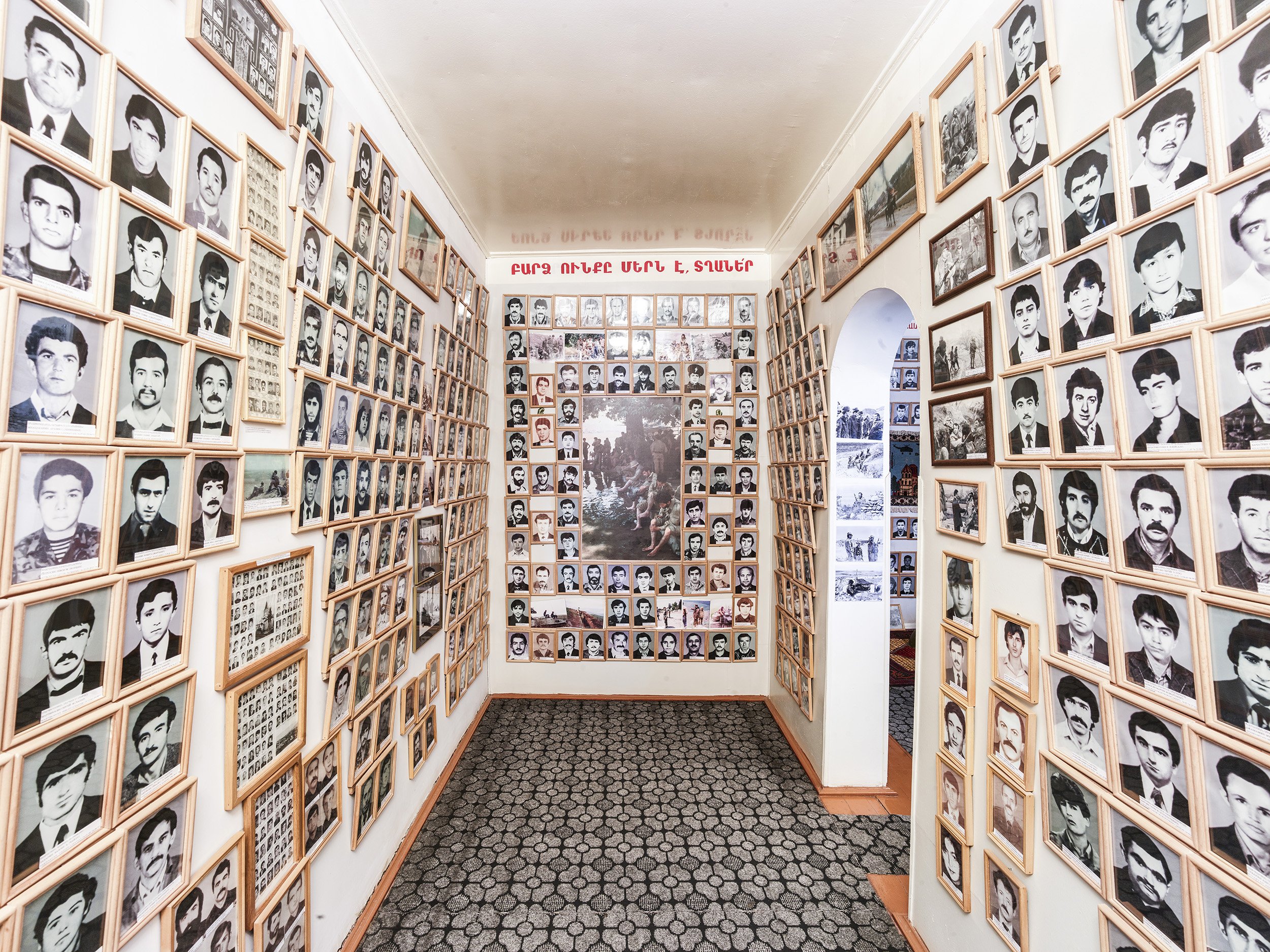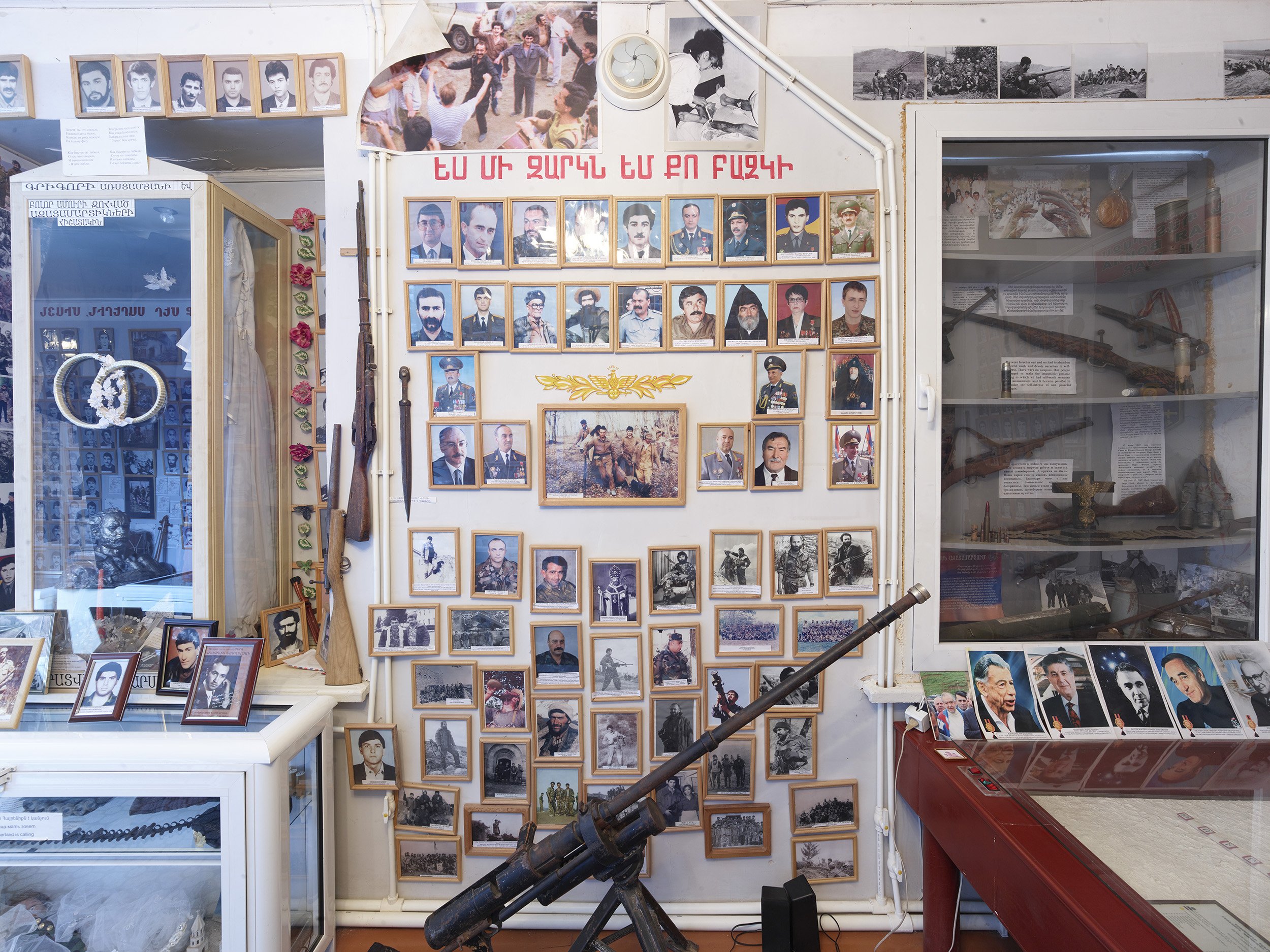Niveles de destrucción
Un proyecto Jordi Bernadó de Laura Ferrero.
El primer libro de Paul Auster, La invención de la soledad, empieza así: “Un día hay vida”, y este proyecto, Niveles de destrucción surge precisamente de cuando deja de haberla y se extingue de forma no natural.
Este proyecto es una advertencia, pero especialmente un recordatorio del horror y de las cicatrices que no terminan de cerrarse.
A project Jordi Bernadó by Laura Ferrero.
Paul Auster’s first book, The Invention of Solitude, begins thus: “One day there is life”, and this project, Levels of destruction, arises precisely from the moment when it ceases to exist and is extinguished unnaturally.
This project is a warning, but especially a reminder of the horror and the scars that are still healing.
Agdam, Azerbaiyán
Agdam es la ciudad fantasma más grande del mundo. Se asemeja a las ruinas de una antigua civilización, solo que la civilización existía hace treinta años. La habitaban 85.000 personas y era una ciudad bulliciosa, alegre, con un gran mercado. Ahora, apenas malviven aquí 15 o 20 familias armenias desplazadas por la guerra. La destrucción de Agdam tuvo lugar a lo largo a finales de 1991: las fuerzas armenias la capturaron y en la actualidad Agdam está dentro de la zona de dominio de la República de Artsaj. Lo único que se ha mantenido en pie en ella es la mezquita y desde lo alto del minarete se observa la magnitud de la desolación. La naturaleza, que le gana la partida a todo, se la ha ganado también a las ruinas.
Agdam is the largest ghost town in the world. It resembles the ruins of an ancient civilization, except that the civilization existed thirty years ago. It was inhabited by 85,000 people and was a bustling, lively city with a great market. Now, barely 15 or 20 Armenian families displaced by the war survive here. The destruction of Agdam took place throughout the end of 1991: Armenian forces captured it and today Agdam falls within the area under the Artsakh Republic’s domain. In it, the only thing left standing is the mosque and the magnitude of the desolation can be viewed from atop the minaret. Nature, which always prevails, has also conquered the ruins.
Nagorno Karabaj / República de Artsaj, Azerbaiyán
La República de Artsaj, denominada hasta 2017 Nagorno Karabaj, es una república independiente de facto situada en Transcaucasia. Cuando Armenia y Azerbaiyán se independizaron del imperio ruso en 1918, este territorio se convirtió en objeto de disputa que dura hast hoy. El 10 de diciembre de 1991, el territorio se autoproclamó como república independiente y en la actualidad, no ha sido reconocido por ningún estado soberano miembro de las Naciones Unidas y se mantiene como una república autoproclamada con un complejísimo conflicto a sus espaldas que terminó con un alto al fuego pero cuyo acuerdo de paz sigue sin llegar.
El fantasma de la guerra y la presencia de lo militar son rasgos que definen este territorio en cuya capital, Stepanakert, es imprescindible visitar el museo de los soldados que murieron en la batalla por la independencia de Azerbaiyán –que aún no se ha logrado–. De las paredes del museo cuelgan las fotografías de todos y cada uno de los 3250 soldados que murieron en la batalla, incluyendo los 105 que lo hicieron durante esos cuatro días en los que el conflicto estalló de nuevo a lo largo de 4 días en abril de 2016. Los muertos se acumulan, pero no solo ellos también sus pertenencias: trajes de boda, relojes, zapatos. Fetiche, romanticismo y sordidez.
The Republic of Artsaj, named Nagorno Karabakh until 2017, is a de facto independent republic located in Transcaucasia. When Armenia and Azerbaijan became independent from the Russian Empire in 1918, this territory became the object of a dispute that continues to this day. On December 10, 1991, the territory proclaimed itself an independent republic and has yet to be recognized by any sovereign state member of the United Nations, remaining a self-proclaimed republic with a very complex conflict behind it that ended with a ceasefire but with no peace agreement in sight.
The ghost of war and the military presence are features that define this territory, in whose capital, Stepanakert, the museum of fallen soldiers in the battle for Azerbaijan’s independence –which still hasn’t been achieved– is a must-visit. Photographs of each and every one of the 3,250 soldiers who perished in battle hang from the walls of the museum, including the 105 that died during the four days in which the conflict broke out again in April, 2016. The dead accumulate, but so do their belongings: wedding suits, watches, shoes. Fetish, romanticism and sordidness.
Beirut, Líbano
Beirut, capital de Líbano, no es exactamente una ciudad. Se asemeja a una matriuska rusa: capas, ciudades invisibles. Hasta la mitad de los años setenta, el Líbano era uno de los ejemplos de convivencia (en el país son legalmente reconocidas diecisiete comunidades religiosas), pero este sueño se truncó a partir de 1975 convirtiéndose en paradigma de la violencia sectaria.
Sufrió una larga guerra civil entre 1975 y 1990, quince años de miedo y destrucción, a los que siguieron otros quince años de reconstrucción, de esperanzas y de la férrea voluntad de volver a empezar.
Beirut es ahora una ciudad que mira al futuro. Sin embargo, en sus calles quedan aun vestigios, cicatrices que son un recordatorio de que el pasado no está tan lejos.
Beirut, the capital of Lebanon, is not exactly a city. It resembles a Russian matryoshka: layers, invisible cities. Until the mid-seventies, Lebanon was an example of coexistence (seventeen religious communities are legally recognized in the country), but this dream was cut short in 1975, when it become a paradigm of sectarian violence.
It endured a long civil war between 1975 and 1990, fifteen years of fear and destruction, followed by another fifteen years of reconstruction, hope and the iron will to begin again.
Beirut is now a city that looks to the future. However, there are still traces in its streets, scars that are serve as reminders that the past is not so far away.

